

Gianfranco has over 20 years experience in CRM and Personalisation.
Most recently he led CRM and Personalisation for Natura & Co. The group comprises the four iconic brands of Aesop, Avon, Natura and The Body Shop.
Prior to transitioning to a Group role, he was at Aesop where he was responsible for Global CRM including Recognition and Replenishment. Joining Aesop in 2019 he transformed the brand’s capabilities in how they directly engage with customers across their markets and regions. Those capabilities centred on delivering technology, people and data to support Aesop’s truly unique vision of understanding the customer.
Prior to his Natura & Co roles, Gianfranco spent most of his career agency side working with brand as diverse as BMW, adidas, BT, Disney and easyjet to name but a few.
With a first degree in Astrophysics, he enjoys explaining that engaging with customers in a relevant way need not be rocket science!
Available For: Advising, Authoring, Consulting, Influencing, Speaking
Travels From: York, London and the rest of the world
Speaking Topics: CRM , Loyalty , Personalisation
| gianfranco cuzziol | Points |
|---|---|
| Academic | 40 |
| Author | 229 |
| Influencer | 46 |
| Speaker | 71 |
| Entrepreneur | 80 |
| Total | 466 |
Points based upon Thinkers360 patent-pending algorithm.
Tags: CRM, Customer Experience, Customer Loyalty
 Savant Events
Savant Events
Tags: CRM, Customer Experience, Customer Loyalty
 “How do you balance emotional intelligence with tough decisions?”
“How do you balance emotional intelligence with tough decisions?”
Tags: CRM, Customer Experience, Customer Loyalty
 The Unseen Guest: When Personalisation Takes an Unscheduled Holiday
The Unseen Guest: When Personalisation Takes an Unscheduled Holiday
Tags: Business Strategy, CRM, Customer Loyalty
 Weekly Note - 16th February
Weekly Note - 16th February
Tags: CRM, Customer Experience, Customer Loyalty
 A Brief History of AD BC
A Brief History of AD BC
Tags: CRM, Customer Experience, Customer Loyalty
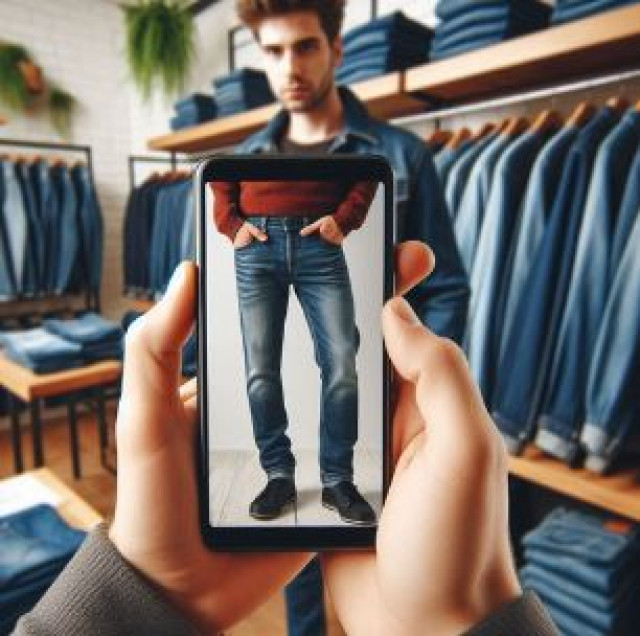 The True Purpose of Omnichannel: Meeting Customer Expectations or Simply Keeping Up?
The True Purpose of Omnichannel: Meeting Customer Expectations or Simply Keeping Up?
Tags: CRM, Customer Experience, Customer Loyalty
 Tailoring loyalty programmes to changing consumer expectations
Tailoring loyalty programmes to changing consumer expectations
Tags: CRM, Analytics
 eTail 25
eTail 25
Tags: CRM
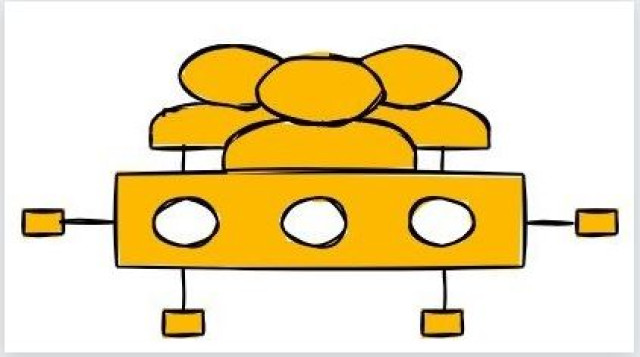 Navigating the Complex World of Customer Data Platforms: A Refined Strategy
Navigating the Complex World of Customer Data Platforms: A Refined Strategy
Tags: CRM, Customer Experience
 Beyond the CV: Henry Ford's Unconventional Approach to Talent Selection
Beyond the CV: Henry Ford's Unconventional Approach to Talent Selection
Tags: CRM
Tags: CRM
Tags: CRM, Retail
 Gamification is now the point when it comes to customer loyalty
Gamification is now the point when it comes to customer loyalty
Tags: CRM
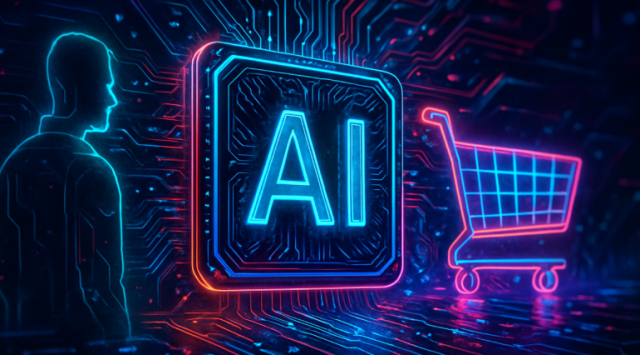 Seamless by Design (Not by Accident): Unified Commerce Lessons from Signet & Currys
Seamless by Design (Not by Accident): Unified Commerce Lessons from Signet & Currys
Tags: CRM, Customer Experience, Customer Loyalty
 AI in Retail – Beyond the Hype (and Into Reality)
AI in Retail – Beyond the Hype (and Into Reality)
Tags: CRM, Customer Experience, Customer Loyalty
 AI Chatbots Transforming CRM and Omnichannel Customer Experience
AI Chatbots Transforming CRM and Omnichannel Customer Experience
Tags: CRM, Customer Experience, Customer Loyalty
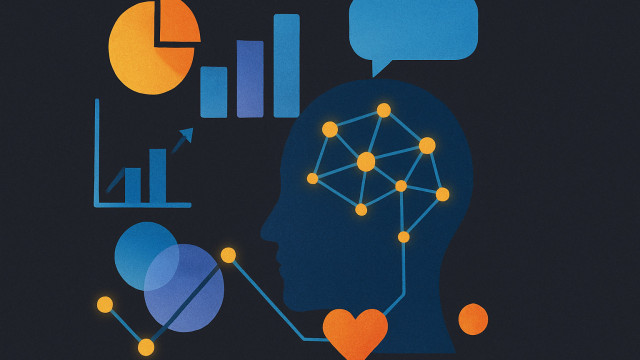 Your Loyalty Program Is Obsolete: The 5 New Rules for Winning Customers
Your Loyalty Program Is Obsolete: The 5 New Rules for Winning Customers
Tags: CRM, Customer Experience, Customer Loyalty
 AI and the Future of Customer Relationships
AI and the Future of Customer Relationships
Tags: Customer Experience, Customer Loyalty, Analytics
 From Tactics to Strategy: Embedding DEPTH in Personalisation
From Tactics to Strategy: Embedding DEPTH in Personalisation
Tags: CRM, Customer Experience, Customer Loyalty
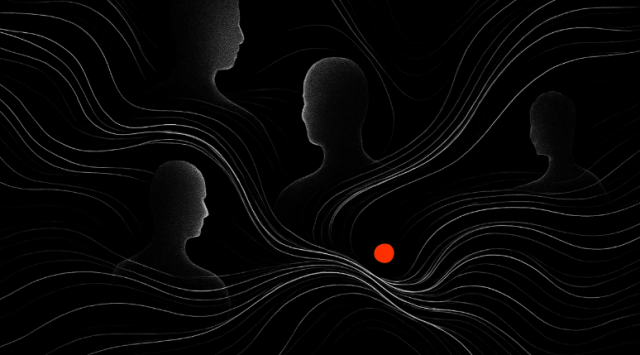 Schrödinger’s Customer: Why Quantum Thinking Is the Next Frontier of CRM Strategy
Schrödinger’s Customer: Why Quantum Thinking Is the Next Frontier of CRM Strategy
Tags: CRM, Customer Experience, Customer Loyalty
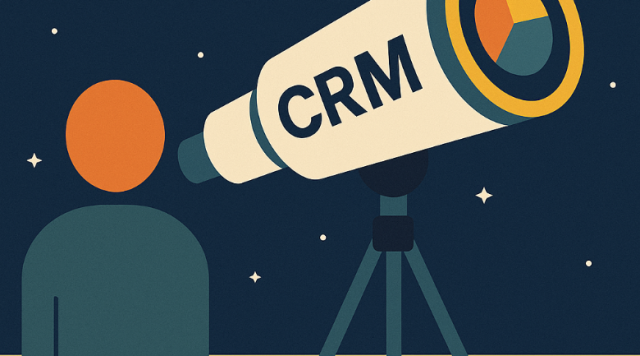 CRM Isn’t Just the Postman. It’s the Telescope.
CRM Isn’t Just the Postman. It’s the Telescope.
Tags: CRM, Customer Experience, Customer Loyalty
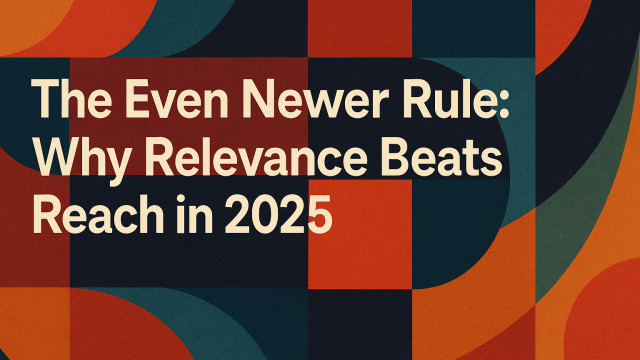 The Even Newer Rule: Why Relevance Beats Reach in 2025
The Even Newer Rule: Why Relevance Beats Reach in 2025
Tags: CRM, Customer Experience, Customer Loyalty
 Why CRM Really Matters (and Why It Probably Keeps Your Competitors Up at Night)
Why CRM Really Matters (and Why It Probably Keeps Your Competitors Up at Night)
Tags: CRM, Customer Experience, Customer Loyalty
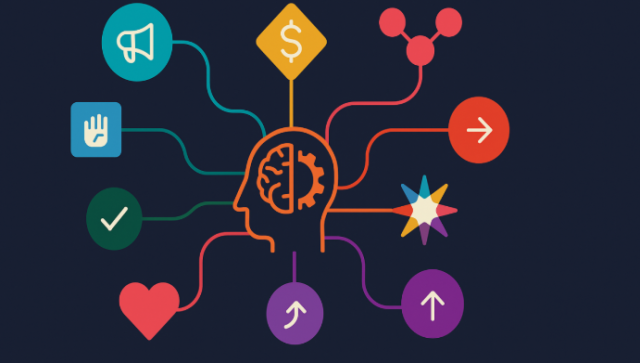 Why Behavioural Science Belongs in Your CRM Stack
Why Behavioural Science Belongs in Your CRM Stack
Tags: Business Strategy, CRM, Customer Loyalty
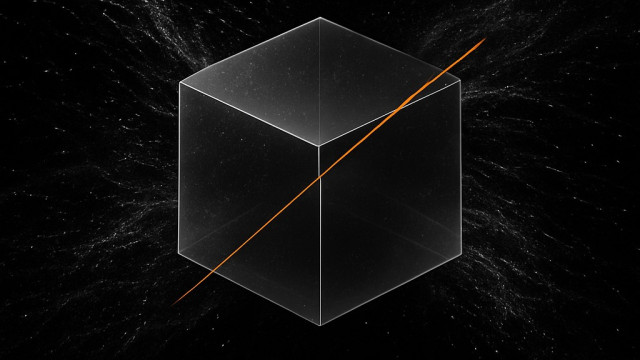 From Hoarding to Harvesting: Why CRM Teams Need to Think Like Product Managers
From Hoarding to Harvesting: Why CRM Teams Need to Think Like Product Managers
Tags: CRM, Customer Experience, Customer Loyalty
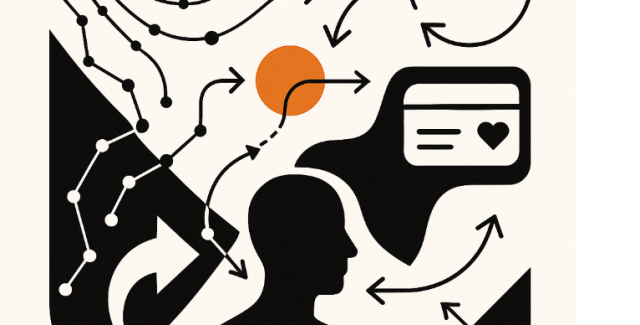 How are AI and advanced analytics helping brands rethink loyalty programs?
How are AI and advanced analytics helping brands rethink loyalty programs?
Tags: Business Strategy, CRM, Customer Loyalty
 Loyalty Programs Are a Sign of a Weaker Brand
Loyalty Programs Are a Sign of a Weaker Brand
Tags: CRM, Customer Experience, Customer Loyalty
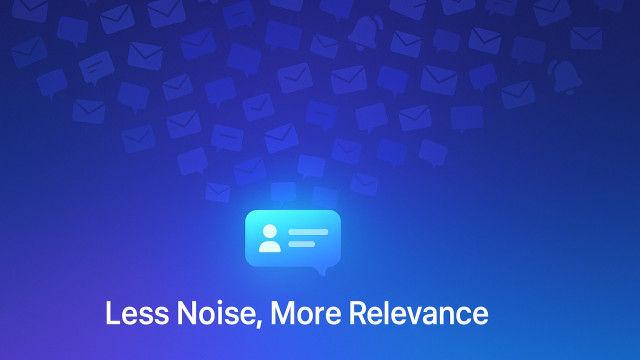 Marketing Fatigue: How to Move from Message Volume to Customer Value
Marketing Fatigue: How to Move from Message Volume to Customer Value
Tags: CRM, Customer Experience, Customer Loyalty
 Cialdini’s Principles of Persuasion in Customer Loyalty Programs
Cialdini’s Principles of Persuasion in Customer Loyalty Programs
Tags: CRM, Customer Experience, Customer Loyalty
 When Customers Go Quiet: What Saturn’s Disappearing Rings Teach Us About Brand Loyalty
When Customers Go Quiet: What Saturn’s Disappearing Rings Teach Us About Brand Loyalty
Tags: CRM, Customer Experience, Customer Loyalty
 In Pursuit of The Trivial
In Pursuit of The Trivial
Tags: Business Strategy, CRM, Customer Loyalty
 Chief Curator and Lecturer CR(M)BA
Chief Curator and Lecturer CR(M)BA
Tags: Business Strategy, CRM, Customer Loyalty
Tags: Business Strategy, CRM, Customer Loyalty
Tags: CRM, Customer Experience, Customer Loyalty
 Customer Engagement Leadership Programme
Customer Engagement Leadership Programme
Tags: CRM, Customer Experience, Customer Loyalty
 What Does the Customer Want?
What Does the Customer Want?
Tags: CRM, Customer Experience, Customer Loyalty
 Achieve Seamless, Insight-Driven Customer Journeys That Maximise ROI, Boost Conversations & Fuel Customer Satisfaction, Engagement & Retention
Achieve Seamless, Insight-Driven Customer Journeys That Maximise ROI, Boost Conversations & Fuel Customer Satisfaction, Engagement & Retention
Tags: CRM, Customer Experience, Customer Loyalty
 Savant 2 Conference London September 2024
Savant 2 Conference London September 2024
Tags: Business Strategy, CRM
 Crafting hyper-personalised customer experiences with AI panel.
Crafting hyper-personalised customer experiences with AI panel.
Tags: Big Data, CRM, Customer Loyalty
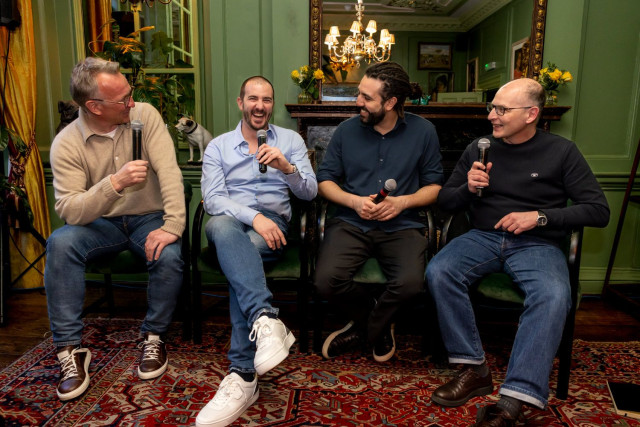 Retail Visionaries
Retail Visionaries
Tags: Business Strategy, CRM, Retail
 How can you build a strong brand that fosters a loyal and devoted customer base?
How can you build a strong brand that fosters a loyal and devoted customer base?
Tags: CRM, Customer Loyalty, Retail
 Cracking the Code - Aligning Strategies for Retail Media Success
Cracking the Code - Aligning Strategies for Retail Media Success
Tags: CRM, Customer Experience, Retail
 Strategies to improve and create customer experience around customer wants
Strategies to improve and create customer experience around customer wants
Tags: CRM, Customer Loyalty, Retail
 Endless Aisle
Endless Aisle
Tags: CRM, Customer Experience, Retail
 Customer Engagement and Personalisation
Customer Engagement and Personalisation
Tags: CRM, Customer Experience, Customer Loyalty
 Retail Reimagined: The Modern Ethos of the New Customer Experience
Retail Reimagined: The Modern Ethos of the New Customer Experience
Tags: CRM, Customer Experience, Retail
 Personalization Strategy
Personalization Strategy
Tags: CRM, Customer Experience, Customer Loyalty














Tags: Business Strategy, CRM, Customer Loyalty

Tags: CRM, Customer Experience, Customer Loyalty

Tags: CRM, Customer Experience, Customer Loyalty
 MBA Group Not Just a Transaction: Using AI to Drive Lasting Loyalty
MBA Group Not Just a Transaction: Using AI to Drive Lasting Loyalty
Tags: AGI, CRM, Customer Loyalty

Tags: CRM, Customer Experience, Customer Loyalty
 Effective Black Friday Prep and Strategies for Navigating Bargain Hunters
Effective Black Friday Prep and Strategies for Navigating Bargain Hunters
Tags: CRM, Customer Loyalty, Retail

Tags: CRM, Customer Experience, Customer Loyalty
Date : October 31, 2025
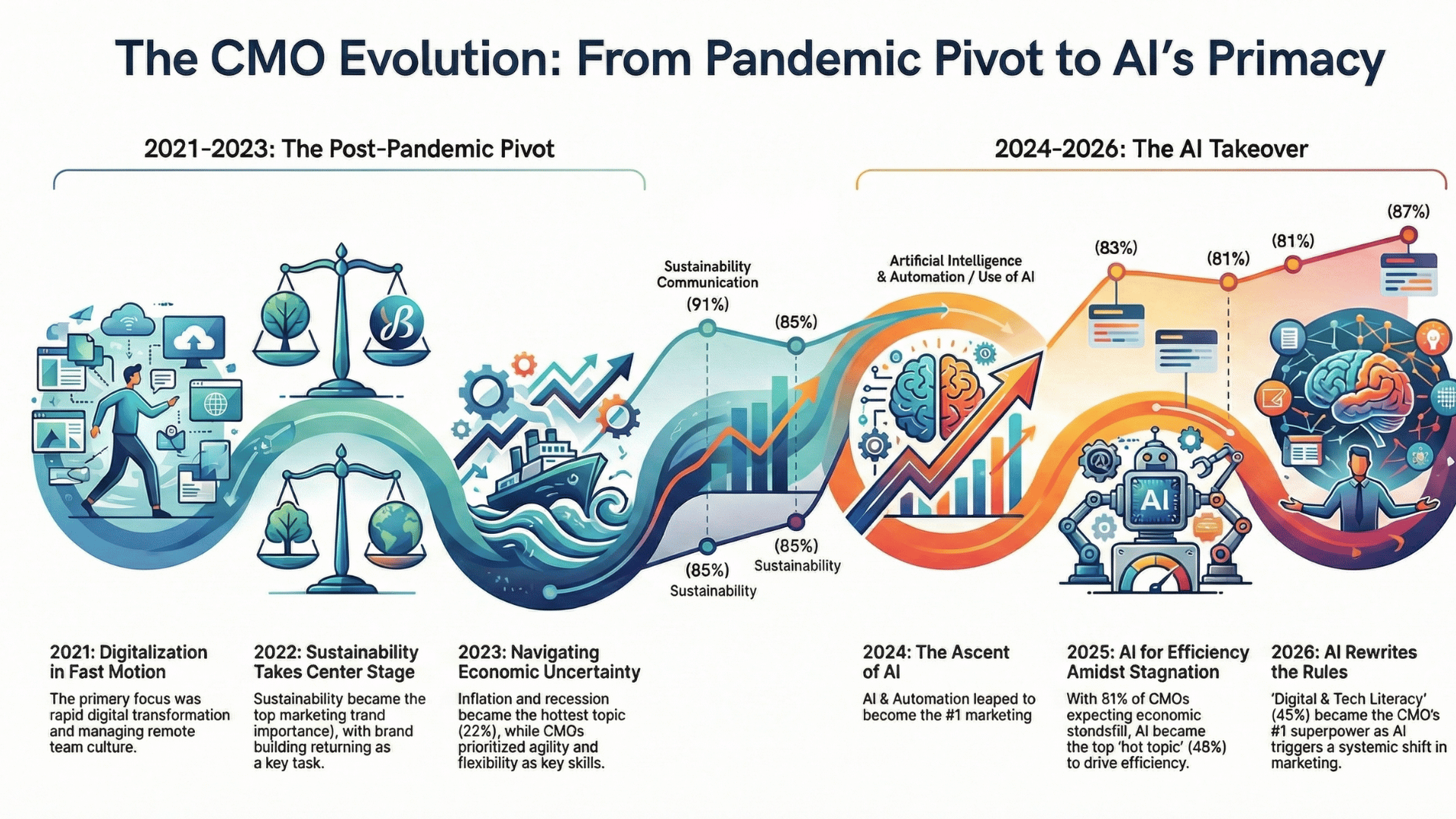 The (Digital) CMO Barometer
The (Digital) CMO Barometer
The digital acceleration, catalyzed by the rapid changes observed during the COVID-19 period, has consistently shifted the CMO's core agenda from a focus on general digital adoption to a necessary systemic integration of advanced technology, specifically culminating in Artificial Intelligence (AI) as the paramount priority.
The reshaping of the agenda can be tracked through several phases:
Initially, the agenda focused heavily on essential digital infrastructure and data management. In 2021, the urgency of digitalization was high, pushing companies to reallocate resources and digitalize marketing tools.
As digital maturity increased, AI and automation rapidly moved from an emerging topic to the central driver of the CMO agenda.
In the most recent years surveyed, AI transformed from being merely a tool or trend into the backbone of modern marketing, requiring a fundamental overhaul of processes and leadership skills.
This journey shows that the core agenda has been consistently reshaped from prioritizing foundational data and digital transformation to mandating the strategic, integrated, and efficient application of AI to drive customer experience and measurable results.
( Material sourced from the CRM Barometer)
Tags: AI, CRM, Digital Transformation
 CRM Isn’t Just the Postman. It’s the Telescope.
CRM Isn’t Just the Postman. It’s the Telescope.
How Boots, Tesco, Nike and others used CRM to read the market before the market spoke.
In marketing, some tools are so misunderstood they should come with a therapist and a whiteboard.
CRM is one of them.
We treat it like a glorified delivery van — shuttling offers, nudging behaviour, dispatching birthday emails with surgical precision (and usually the wrong name).
But here’s the truth no one writes in the job spec:
CRM isn’t just how you deliver value. It’s how you discover what people value.
The smartest brands are using CRM not to react to customer demand, but to reveal it — sometimes before customers even know what they want.
Let’s rewind the tape.
The Moisturiser That CRM Built
Back in the early 2000s, Boots did something deceptively simple: it listened to its Advantage Card data.
According to Boots’ then Director of Insight, the company noticed an unusual yet consistent spike: men buying skincare — often the same products, repeatedly, at similar times of the month.
It wasn’t part of the men’s category at the time. In fact, the shelves didn’t really cater for it.
But instead of ignoring the anomaly, Boots expanded the men’s grooming range. And lo and behold — a new category emerged.
[Source: The Times, Boots Advantage Card retrospective, 2004]
This wasn’t driven by gut. Or a McKinsey slide.
It was CRM as telescope.
CRM as Telescope, Not Toolkit
CRM has always suffered from a reputation problem.
A channel. A system. A "send engine."
But at its best, CRM is a strategic asset.
A dataset with a heartbeat.
Done right, it tells you:
It’s less campaign engine, more early warning system.
Five Brands That Didn’t Just Use CRM — They Listened to It
Here are five other examples — spanning grocery, beauty, sports, travel, and ecommerce — where CRM helped shape market strategy, not just customer journeys.
In the late 2000s recession, Tesco's Clubcard team noticed a subtle shift in purchasing patterns: a rise in own-label products and basket consolidation among lower-income families.
It wasn’t in the headlines yet, but CRM told them it was coming.
Tesco responded with the “Everyday Value” range, revamped its in-store experience, and shifted the tone of its marketing to reflect caution and care.
“What customers were buying told us what they were fearing.”
(Source: Dunnhumby archives, case study retrospective via Marketing Week)
Sephora – Killing Off Lazy Demographics
Sephora's Beauty Insider loyalty data showed a curious inversion: Gen Z shoppers dabbling in £200 serums, while Boomers picked up the glitter palettes.
Traditional segmentation said: “That’s wrong.”
CRM said: “That’s interesting.”
So, Sephora shifted from demographics to behaviour-based personalisation — clustering users by habits, not age.
The result? Better engagement, smarter product bundling, and influencer tie-ups that actually matched emerging behaviour.
(Source: Forbes, 2022 – Sephora's Loyalty Personalisation Strategy)
Nike – Segmenting by Motivation, Not Miles
Nike combined CRM data with the Nike Run Club app, yielding a richer segmentation:
They weren’t just tracking miles — they were understanding why people run.
CRM then shaped product launches (like Nike Joyride for beginners) and content streams tailored to each group’s motivation.
(Source: Harvard Business Review, “Nike’s Customer Ecosystem”, 2021)
Delta Airlines – CRM with Predictive Empathy
Delta used CRM fused with AI to predict customer frustration — specifically, who was most likely to churn after a travel disruption.
Instead of blanket apologies, they deployed pre-emptive recovery comms:
CRM shifted from cost-centre to churn-prevention machine.
(Source: AdAge interview with Delta’s VP of Loyalty & CRM, 2023)
Amazon – When CRM Shapes the Shelf
Amazon didn’t wait for the eco-trend to mature.
Its CRM and purchase history revealed rising interest in sustainably sourced and local products, well before supplier demand caught up.
The result? “Climate Pledge Friendly” — a curated storefront based on intent signals, not merchandising trends.
CRM told Amazon what the market wanted next.
(Source: Amazon Press Room + Shopify’s “CRM and the New Retail”, 2021)
From Execution to Exploration
So, what’s the takeaway?
If you’re running CRM purely as a delivery mechanism, you’re playing with half the deck.
Because buried in that clickstream, redemption rate, or abandoned browse?
Might be your next product line.
Your next segment.
CRM is the first-place un-met needs show up.
If you know where to look.
What This Means for You
Ask yourself:
Because in a world of AI hype and short-termism, the brands who win are those who know how to listen before they speak.
Final Thought
CRM doesn’t just describe your customer.
It describes your future.
Use it like a telescope.
Before someone else does.
Have you seen CRM used this way in your work? Are you being asked to do CRM or to learn from CRM?
Tags: Big Data, CRM, Customer Loyalty
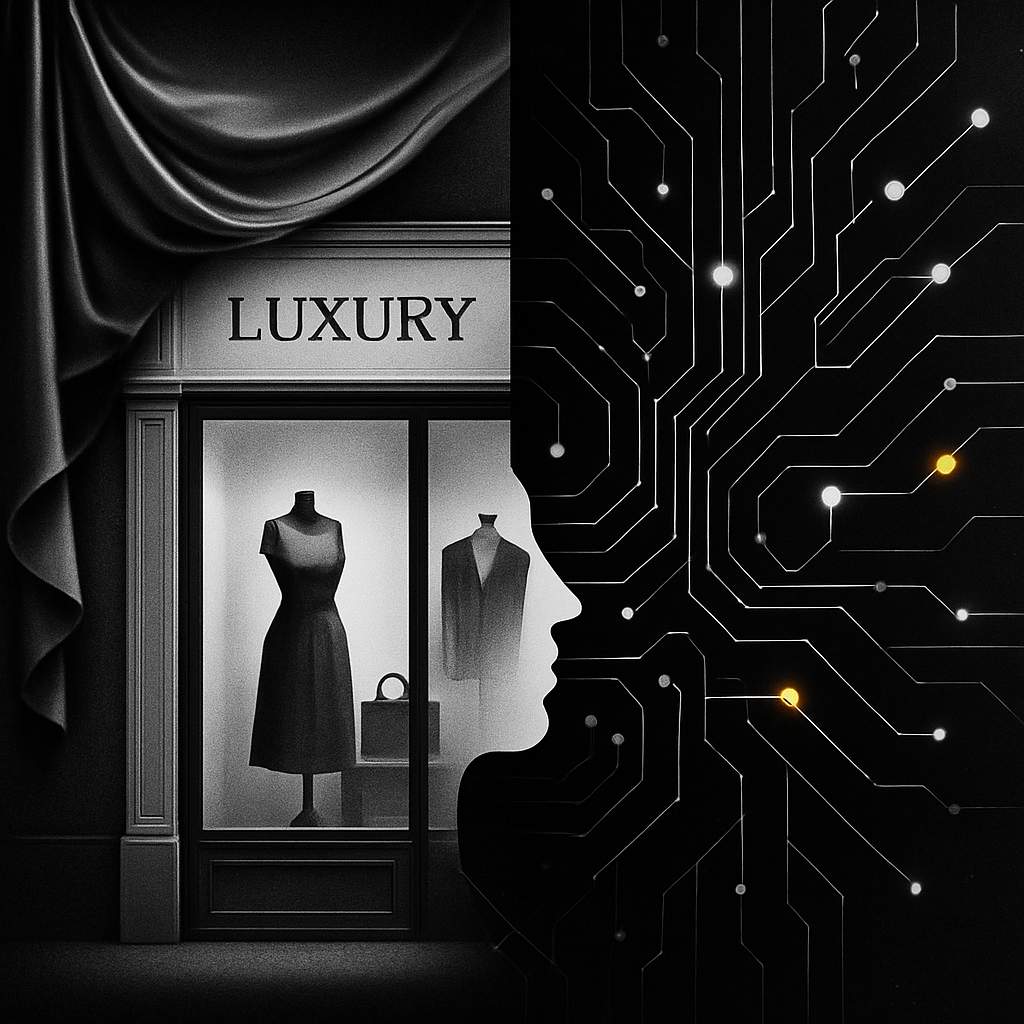 Luxury’s Digital Pivot: What LVMH’s AI Strategy Reveals About the Future of High-End CRM
Luxury’s Digital Pivot: What LVMH’s AI Strategy Reveals About the Future of High-End CRM
Luxury’s Digital Pivot: What LVMH’s AI Strategy Reveals About the Future of High-End CRM
The luxury sector is changing its footing. After years of pandemic-fuelled expansion, signs of a global slowdown are emerging—from cautious Chinese consumers to margin-squeezing inflation. LVMH, the world’s most valuable luxury group, is choosing not to wait for a rebound. Instead, it’s leaning decisively into artificial intelligence.
But this isn’t just about efficiencies. It’s about reimagining what “luxury” means in a world shaped by algorithms, data flows, and rising consumer expectations.
Here are the five key takeaways from LVMH’s strategy—and what they signal for those of us in CRM, personalisation, and loyalty:
1. AI Needs a Data Foundation, Not Just Ambition
While many brands are piloting AI, LVMH has spent the last four years laying the pipes. In partnership with Google Cloud, it’s built a single data platform that connects all 75 of its maisons. This creates a unified source of truth across marketing, supply chain, finance, and customer engagement.
Why does this matter? Because the future of personalisation isn’t just smarter emails—it’s orchestration across every touchpoint. Fragmented data = fragmented experience. LVMH’s foresight proves that CRM without strong data foundations is just glorified email marketing in a silk wrapper.
2. Operations and Creativity Can Coexist—Thanks to AI
Franck Le Moal, LVMH’s Group IT director, sums it up perfectly: “Tech is mandatory to become super-efficient and at the same time keep the spirit and essence of luxury.”
This is the paradox that AI helps resolve. On the one hand, predictive models now inform supply planning, helping brands avoid overproduction (a cardinal sin in luxury). On the other, dynamic pricing engines adjust for fluctuations in foreign exchange or duties—without losing brand equity.
It’s not just about being fast. It’s about being precisely, intentionally fast—while still making it feel slow, rare, and considered to the customer.
3. Personalisation Is About Empowering People, Not Replacing Them
Nowhere is the human-tech balance more visible than at Tiffany & Co., where store advisors use AI assistants to tailor messages, product suggestions, and outreach based on individual customer profiles.
This is human + machine, not human vs. machine.
It signals a critical shift in CRM thinking: from "automate the message" to "augment the messenger." It’s not about removing the store associate—it’s about making them superhuman. And in doing so, preserving the magic of relationship-led commerce.
4. Generative AI Will Redefine Creativity in Marketing and Merchandising
Beyond operations, LVMH is experimenting with generative AI in content and design. Marketing teams are using AI-generated copy tailored to different customer segments, while creative teams use generative mood boards to inspire seasonal campaigns.
Even eCommerce—long a weak spot for many luxury brands—is getting an upgrade. LVMH has implemented Google’s “Search for Commerce,” improving on-site experience and conversions.
What’s important here is that AI isn’t treated as a gimmick. It’s embedded across workflows, not just bolted on for headlines.
For CRM teams, this is the wake-up call: AI isn’t just about better segmentation—it’s about enhancing the full lifecycle, from ideation to execution.
5. AI Must Be Intuitive, Internal, and Trusted
Perhaps the most underappreciated innovation is MaIA—LVMH’s internal AI assistant, powered by Google’s Gemini, Imagen, and GPT models. It currently handles over 2 million requests a month across 40,000 employees.
That’s AI at scale, but it’s also AI with purpose. MaIA is used for ideation, data requests, pricing models, creative prompts—you name it.
This shows that AI isn’t just for the customer-facing side of the business. It’s a cultural shift. A new kind of internal operating system.
For CRM leaders, it raises a strategic question: are we building AI tools, or are we building AI confidence?
Final Thought: The New Luxury Isn’t Just Scarcity. It’s Relevance.
Luxury used to be defined by what you couldn’t have. Today, it’s increasingly defined by how well a brand knows you—without feeling intrusive.
That’s the art of modern CRM in high-end retail: data + discretion, automation + empathy, efficiency + enchantment.
LVMH’s AI play isn’t about shortcuts. It’s about sustainability—of experience, of margin, of relevance.
As the market tightens, this strategy gives us a glimpse of the future: where AI is not a threat to creativity or customer intimacy, but the scaffolding that makes both possible at scale.
Read the full WSJ article here (subscription may be required):
https://www.wsj.com/articles/lvmh-bets-on-ai-to-navigate-luxury-goods-slowdown-0438e328
Tags: AI, CRM, Retail
 From Hoarding to Harvesting: Why CRM Teams Need to Think Like Product Managers
From Hoarding to Harvesting: Why CRM Teams Need to Think Like Product Managers
The problem isn’t that we don’t have enough customer data. Far from it. Most CRM teams are drowning in it — transactional data, behavioural data, channel engagement data, survey data, loyalty status, preferences, location, dwell time, NPS, the occasional emoji.
But here's the rub: most of that data sits idle. Stored. Archived. Passed between platforms like a hot potato no one quite knows how to peel.
The future of CRM isn’t about having more data. It’s about thinking differently about what we already have. And that begins with a deceptively simple question:
The Case for Treating Data as a Product
Let’s flip the mental model. Imagine launching a product that nobody asked for, that no one can find, that’s hard to use, and whose benefits are unclear. You’d call that a failure — and rightly so.
Yet that’s exactly how many brands manage their data assets.
CRM teams have a front-row seat to the consequences. Campaigns that can’t segment beyond recency and frequency. Journeys that stall because consent data is locked in another system. Personalisation that relies more on guesswork than insight.
Thinking like a product manager brings much-needed clarity. It forces us to ask:
These are the same questions we’d ask when launching a new app, feature or service. Apply that lens to CRM data, and suddenly the path forward gets clearer — and more collaborative.
In many organisations, data is still governed like an exclusive club. Controlled by central teams, accessed only through tickets, and updated on a quarterly sprint — if you’re lucky.
CRM, by nature, operates in real time. Or at least, it wants to.
That’s why many forward-looking businesses are shifting away from centralised models and embracing a federated approach— what some call a “data mesh” mindset. This doesn’t mean chaos. It means putting data stewardship into the hands of the teams who are closest to the customer.
For CRM teams, that’s transformative. It means:
But this decentralisation only works when data is discoverable, usable, and governed.
That’s where data product thinking really shines.
Whether you're launching a new segmentation model or building out a retention dashboard, the principles below are a solid starting point:
Don’t start with the data you have. Start with the value you want to create. Whether it’s reducing churn, increasing lifetime value, or improving welcome conversion, work backward from the outcome.
If only the analytics team knows it exists, it isn’t a data product — it’s a secret. Good data products should be searchable, documented, and available for others to reuse.
That churn model you built for Beauty customers? Could it be adapted for Fashion? Data products that scale across use cases are where the ROI kicks in.
Not every CRM exec is a data scientist. Make the outputs accessible, intuitive, and visually meaningful. Think dashboards, not data dumps.
Consistent naming, clear provenance, defined owners. Trust isn’t built through fancy UX — it’s built through transparency.
One of the biggest blockers to CRM data activation is over-engineering. Projects get stuck in planning purgatory. Teams try to perfect the data layer before anyone sees a result.
Forget that!
Use the “thin slice” approach: build a narrow but fully functional data product that cuts through all layers — collection, processing, output, and usage.
Want to improve onboarding? Start with a thin slice:
Small wins like this prove value fast, generate internal momentum, and give the business a taste of what “good” looks like.
Let’s talk AI — because you can’t not.
Everyone wants to plug AI into their CRM programme. Predictive churn. Next-best-action. Real-time optimisation. But AI is a hungry beast. It feeds on clean, structured, contextual data.
In other words: it feeds on data products.
Without high-quality, well-governed, and well-scoped data products, your AI models will either:
a) break,
b) hallucinate,
c) reinforce bias, or
d) all of the above.
Worse, they’ll erode trust in the CRM function.
With data products, however, AI becomes a value multiplier. You can build pipelines where AI is embedded within the product itself — for example, an AI model that takes CRM behavioural data and predicts optimal re-engagement timing, feeding it directly into journey orchestration.
This isn’t science fiction. It’s happening now — and CRM teams need to be part of that build.
Customer expectations have outpaced campaign calendars. Real-time is table stakes. Relevance is currency. And data — the right data — is your engine.
By treating CRM data as a product, you bring it closer to the business, the customer, and the decision point. You make it useful, usable, and used.
You also shift the perception of CRM from a “cost centre that sends emails” to a strategic growth engine— one that connects insight to action in milliseconds, not meetings.
That’s the opportunity.
Not to collect more.
But to use what we already have — better.
*or maybe just slightly faster
Tags: Big Data, CRM, Customer Loyalty
 Loyalty Programs Are a Sign of a Weaker Brand
Loyalty Programs Are a Sign of a Weaker Brand
I am here to challenge the assertion that loyalty programs are a sign of a weaker brand. This claim is not only flawed—it fundamentally misrepresents the role of loyalty programs in modern business.
To argue that a brand with a loyalty program is weak is to overlook the reality of today’s marketplace. It assumes that customer retention happens naturally, that in a world of endless choices and rising expectations, consumers will remain loyal without any effort from brands. But let me ask you this:
Are we really prepared to call Nike, Amazon, and Starbucks weak brands?
Clearly, the existence of a loyalty program is not an indication of weakness. In fact, I would argue that a well-executed loyalty strategy is a hallmark of a brand that understands its customers deeply and has the confidence to invest in long-term relationships.
Let’s talk about the realities of business today.
Brands—no matter how strong—are operating in an era of constant disruption. Consumer expectations are higher than ever, competition is fierce, and digital channels have made switching brands effortless.
The strongest brands don’t assume that their customers will stay forever. They fight for their loyalty. They use data, personalization, and engagement strategies—all of which are enabled by well-designed loyalty programs.
This is not a sign of weakness. This is a sign of strategic intelligence.
Now, let’s address the real issue: It’s not about whether a brand has a loyalty program—it’s about how they use it.
Weak brands? They become subservient to their loyalty programs. They rely on constant discounts and points giveaways because they have no deeper connection with their customers. They treat loyalty like a cost centre, rather than a growth strategy.
Strong brands? They master loyalty programs. They craft them not as a discounting mechanism, but as an experience. Instead of bribing customers to stay, they use loyalty programs to enhance brand engagement, offer exclusivity, and create emotional connections.
Just look at Sephora. Their Beauty Insider program isn’t about points—it’s about status. It makes customers feel valued, offering VIP experiences, exclusive products, and early access to new launches. This is not a brand struggling for survival. This is a brand building a community of devoted customers.
Another false assumption in this debate is that loyalty programs are purely transactional.
Yes, some outdated programs rely on rigid points systems and repetitive discounts. But the best brands go far beyond that. They use loyalty to shape customer behaviour, increase engagement, and build ecosystems that customers don’t want to leave.
Consider Apple—a brand often cited as one that doesn’t need a loyalty program. While it may not have a traditional points-based program, Apple has created one of the most effective loyalty ecosystems in history. The seamless integration between hardware, software, and services—from iPhones to iCloud to the App Store to Apple Music—ensures customers stay within the Apple universe. That is loyalty by design.
Even Tesla, which also lacks a conventional program, relies on referral rewards and exclusive benefits to drive advocacy. The mechanism is different, but the objective remains the same: encourage long-term commitment and emotional investment in the brand.
So, does having a loyalty program make a brand weak? Or does knowing how to build and master loyalty make a brand even stronger?
Weak brands depend on loyalty programs because they have nothing else to offer. But strong brands use loyalty programs as a tool to reinforce their strength—to build communities, personalize experiences, and turn customers into advocates.
A loyalty program is not a sign of weakness. It is a sign of a brand that understands the power of customer relationships and the future of brand success.
The strongest brands are not subservient to their loyalty programs—they master them
Tags: Business Strategy, CRM, Customer Loyalty
 Cialdini’s Principles of Persuasion in Customer Loyalty Programs
Cialdini’s Principles of Persuasion in Customer Loyalty Programs
Below we explore each principle and provide a real-world example of a global brand’s loyalty program that illustrates how that principle is embedded in the program’s design or communication, ultimately driving customer engagement and loyalty. Each section highlights specific features of the program and why they work, across points-based rewards, paid memberships, and gamified loyalty systems.
Sephora’s Beauty Insider loyalty program offers free birthday gift sets or bonus points to members, exemplifying the principle of giving first to build goodwill.
The reciprocity principle is about returning favors – people feel obliged to reciprocate when they receive an unexpected gift or kindness
Loyalty programs leverage this by giving members rewards “on the house”, fostering goodwill that customers return with repeat business. A great example is Sephora’s Beauty Insider program (a free, points-based loyalty program for the beauty retailer). Sephora showers its members with “surprise and delight” perks – notably a free birthday gift each year for every member, no purchase necessary. This personalized, unexpected gift makes members feel valued and creates a subconscious sense of obligation or desire to “give back” by shopping at Sephora. It strengthens the emotional connection between the customer and the brand, which increases loyalty and lifetime value
By giving benefits first, Sephora’s program makes customers feel appreciated. This not only encourages them to reciprocate with repeat purchases, but also differentiates the loyalty program as customer-centric. The result is a win-win: members enjoy free gifts and special treatment, and Sephora enjoys increased customer loyalty and spending as a return favour
The commitment and consistency principle says that once people commit to something, they tend to stick with it to be consistent with their initial decision. Loyalty programs take advantage of this by securing an upfront commitment from customers – even a small one – and then building on it. A prime example is the Amazon Prime membership program. Amazon Prime is a paid loyalty program (members pay an annual fee for a suite of benefits), and it masterfully locks in customer commitment, leading to very consistent, loyal purchase behavior. How Amazon Prime uses this principle:
Upfront Membership Commitment: Prime requires customers to pay an annual fee (or monthly fee) to join. This is a deliberate commitment. Psychologically, once you’ve paid for Prime, you want to justify that expense by using Amazon as much as possible. Prime members end up shopping far more frequently on Amazon to “get their money’s worth,” which is exactly the consistency effect. In fact, once they’ve paid, Prime members actively prefer to buy on Amazon (free shipping, etc.) rather than elsewhere, to stay consistent with the commitment they made. This two-way commitment is powerful – as one analysis noted, “Amazon Prime members want to make additional purchases to justify the membership cost.”
Amazon Prime’s loyalty effect illustrates commitment & consistency in action. By getting that upfront commitment (even though it’s paid), Amazon secures “truly committed” customers. Those customers then consistently choose Amazon for purchases to stay aligned with their commitment – driving significantly higher purchase frequency and spend. The commitment principle is so strong that it transforms behavior: Prime members become loyal by identity (“I am a Prime member”), ensuring long-term engagement.
Humans tend to look at what others are doing when making decisions – this is the social proof principle. If a loyalty program is extremely popular and heavily used by people around us, we’re more likely to join and participate, assuming it must be valuable. Brands capitalize on this by publicizing their loyalty programs’ popularity and creating community features that show many peers engaging. A clear illustration is Marriott Bonvoy, the global hotel loyalty program of Marriott. Bonvoy is one of the largest loyalty programs in the world, and Marriott leverages its huge membership base as a selling point to attract and reassure customers. Here’s how social proof plays out in Marriott’s program:
Massive Membership Numbers: Marriott frequently shares the impressive size of its loyalty program. As of 2024, Marriott Bonvoy had over 200 million members worldwide – making it one of the largest (if not the largest) loyalty programs in any industry. This sheer number signals to potential members that “everyone else is in Bonvoy.” Seeing that hundreds of millions of fellow travelers have joined creates a powerful social proof: if so many people find it worthwhile, new customers infer that they should join too, so as not to be left out. (Indeed, Marriott’s CEO emphasizes the program’s size as a strength in engagement.)
Community and Sharing: Marriott Bonvoy also fosters a sense of community by encouraging members to share their experiences. On social media, Marriott highlights user-generated content from members, and members often tout their status level or points-earned stories in travel forums. This public visibility of loyalty (people proudly saying “I used my Bonvoy points for a free night!”) acts as social proof to others who follow travel communities. Additionally, referrals by word-of-mouth from millions of existing members bring in new members who don’t want to miss out on what friends and family are enjoying.
By emphasizing how popular and widely used the program is, Marriott uses social proof to its advantage.
The authority principle means people are persuaded by experts or authoritative endorsements – we tend to trust and follow the recommendations of credible, knowledgeable sources. In loyalty programs, this principle is leveraged when a program is backed by experts, awards, or a reputation for excellence, giving customers confidence that joining the program is a smart, safe choice. Hilton Honors, the global hotel loyalty program of Hilton, exemplifies this: Hilton uses its industry awards and expert rankings to convey authority and persuade customers of its program’s value. Here’s how Hilton Honors embeds authority:
“Best Loyalty Program” Accolades: Hilton Honors has consistently been rated as a top loyalty program by industry authorities. For instance, it won The Points Guy’s “Best Hotel Loyalty Program” award and was ranked the #1 Hotel Loyalty Scheme by Business Traveller. It’s also frequently atop expert rankings (e.g. named “Best Hotel Rewards Program” in various travel magazines and by frequent travelers). Hilton proudly showcases these honors. By advertising that travel experts and award panels have given Hilton Honors the highest marks, the brand signals to customers that this is an authoritative program to join. The implicit message: “Experts agree Hilton Honors is the best,” which builds trust in prospective members’ minds (people think if authorities say it’s the best, it probably is).
Expert Design of Benefits: Authority can also come from how the program is structured. Hilton Honors, for instance, provides benefits that align with expert traveler advice (e.g., generous late checkout, free breakfast for elite members – perks travel bloggers and consultants often recommend as valuable). By incorporating features that industry experts praise, Hilton’s program feels well-designed by professionals, further enhancing its authority. Additionally, partnerships with other trusted brands (airlines, credit cards like American Express) lend authority by association – if Hilton Honors is the chosen partner of these respected companies, it must be reputable.
In essence, Hilton Honors uses authority signals to reassure and attract customers.
The liking principle asserts that people are more likely to be influenced by people (or brands) that they like, find attractive, or feel connected to
In loyalty programs, fostering a positive emotional relationship – through brand personality, personal interactions, or community belonging – can enhance loyalty beyond the rational perks. Customers stick with programs (and companies) that they have warm feelings toward. Harley-Davidson’s Harley Owners Group (H.O.G.) is a standout example where the loyalty “program” is essentially a community built on genuine affinity. H.O.G. is a global club for Harley-Davidson owners, and it uses the liking principle by turning customers into a tight-knit group of friends who share a passion. This drives extraordinary loyalty. Key aspects of H.O.G. and the liking principle: Harley-Davidson’s H.O.G. (Harley Owners Group) rallies and rides bring together a community of riders who share a love of the brand. The camaraderie and lifestyle appeal foster strong bonds (liking) that translate into loyalty.
Brand Community and Camaraderie: H.O.G. is far more than a typical points program – it’s a community experience. With over one million members worldwide and 1,400+ local chapters, it creates instant camaraderie among Harley owners. Members frequently gather for group rides, rallies, and events, forming friendships around their shared hobby. This sense of belonging fulfills a social need – members like each other and have fun together, which in turn makes them love the Harley-Davidson brand even more. As one rider put it, “I wanted to hang out with the Harley crowd… it’s easy to like the freedom Harleys convey.”
By embedding the brand in a enjoyable social context, H.O.G. makes the act of brand loyalty an enjoyable, likable experience in itself.
Through H.O.G., Harley-Davidson demonstrates that loyalty can be driven by friendship and affinity.
The scarcity principle hinges on the idea that people place higher value on things that are scarce or hard to get. In marketing, limited-time offers or exclusive items create a sense of urgency and specialness that spurs people to act. Loyalty programs cleverly use scarcity by giving their members access to deals or products that are not available to everyone or only available for a short window, thereby motivating customers to engage so they don’t miss out (a bit of FOMO). Nike’s membership program provides a clear example of leveraging scarcity. Nike’s program (free to join via Nike app and the SNKRS app) doesn’t use points; instead, it focuses on exclusive access and experiences for members – many of which are scarce by nature. Here’s how Nike applies scarcity in its loyalty/engagement program:
Limited-Edition Product Access: Nike rewards its loyal members by giving them “privileged access to new and limited-edition products.” Members often enjoy early access to sneaker releases or members-only product drops. For example, a much-hyped Air Jordan collaboration might be made available on the SNKRS app only to certain members with Exclusive Access, or to all members a few hours before the general public. These coveted sneakers typically sell out, so the chance to buy one is genuinely scarce. Knowing that only members get that shot at the limited sneaker drives countless sneaker enthusiasts to join Nike’s program and stay actively engaged (they’ll open the app when notified, participate in draws, etc.). Scarcity here creates excitement and urgency – members feel privileged and rush to act, which boosts Nike’s sales and app engagement.
Members-Only Offers and Content: Nike also provides members-only sales or events that occur for a limited time. For instance, a “Member Day” sale with a special discount on select items might run for 48 hours exclusively for Nike members. The short timeframe (scarcity of time) plus exclusivity (not open to non-members) prompts members to take advantage of the offer now, rather than delay. This drives immediate engagement and reinforces the habit of checking Nike’s member communications regularly (so you never miss a limited deal).
By making certain rewards exclusive or fleeting, Nike creates a sense of urgency and exclusivity that deeply engages its customers.
These real-world cases demonstrate that beyond points and perks, psychology is at the heart of loyalty program design – by appealing to reciprocity, commitment, social proof, authority, liking, and scarcity, brands create programs that not only reward customers, but also persuade them to engage and remain loyal in the long run
Tags: CRM, Customer Experience, Customer Loyalty
 When Customers Go Quiet: What Saturn’s Disappearing Rings Teach Us About Brand Loyalty
When Customers Go Quiet: What Saturn’s Disappearing Rings Teach Us About Brand Loyalty
As many of you may know, before I immersed myself in the world of CRM and loyalty, I earned a degree in Astrophysics. So every now and then, the cosmos calls me back — and occasionally, it offers a metaphor so perfect for customer engagement that I can’t help but share it.
Here’s one of those moments.
From March through December 2025, Saturn — the jewel of our solar system — will appear to lose its rings. These magnificent structures, visible since Galileo’s earliest telescope sketches, will seemingly vanish from view. But let’s be clear: the rings aren’t gone.
This is a phenomenon known as a ring plane crossing. Saturn’s rings sit in the same plane as its equator. And as the planet orbits the Sun, its tilt changes relative to Earth. Every 14 to 15 years, the rings become edge-on from our perspective, so thin — only about 10 metres thick in places — that even powerful telescopes struggle to see them. To the human eye, Saturn becomes plain. Ordinary. A little underwhelming.
But the rings are still there. Just hidden by perspective.
Sound familiar?
In every customer-brand relationship, there are phases. Peaks of activity, moments of dormancy, periods where even your most loyal fans seem to disappear. Open rates drop. Purchase frequency stalls. The CRM dashboard gets quieter. It’s tempting — dangerously so — to assume they’ve left.
But often, like Saturn’s rings, they’re simply out of view.
The truth is, most customers don’t travel in linear journeys. They orbit. They loop in and out. Life gets in the way. Priorities shift. The inbox fills up. But invisibility doesn’t always mean disengagement. The customer is still there — just not visible in the metrics we tend to chase.
This is where mature CRM thinking needs to evolve. Too many brands treat quiet customers as lost ones, triggering reactivation campaigns laced with desperation: “We miss you!” “Come back for 10% off!” Instead, we should be listening more carefully. Watching for subtle signs of life — a browse without a buy, a login without a purchase, a quiet click on a product recommendation.
In other words: not all value is immediately visible. Not all loyalty is loud.
Strategically, this means building lifecycle frameworks that are resilient to quiet phases. It means personalisation that respects the customer’s pace, not the brand’s sales calendar. And above all, it means recognising that just because a customer isn’t currently transacting doesn’t mean they aren’t emotionally connected.
Because here’s the thing: Saturn’s rings will reappear in 2026. They always do. And so too do most customers — if we’ve built a relationship based on relevance, not just urgency.
So the next time your reports show a drop in activity, take a breath. Zoom out. Consider that you might be in a ring plane crossing of your own.
They haven’t disappeared. You just need a different perspective.
Tags: Business Strategy, CRM, Customer Loyalty
 Yum! Brands investing in AI, CRM, Data and Personalisation
Yum! Brands investing in AI, CRM, Data and Personalisation
Imagine you're at your local Taco Bell, craving that cheesy, spicy delight. You pull up to the drive-through, and instead of the usual crackly speaker and hurried attendant, a smooth, almost eerily human-like voice greets you. No, it's not the latest pop sensation moonlighting as a cashier; it's artificial intelligence (AI), poised to take your order with unprecedented accuracy and perhaps even suggest adding a side of nachos because, well, it knows you all too well.
Artificial Intelligence (AI): The New Employee of the Month
Yum! Brands—the culinary maestros behind Taco Bell, KFC, and Pizza Hut—have been cooking up more than just finger-licking recipes. They've partnered with tech giant Nvidia to sprinkle some AI magic across their establishments. The goal? To make your fast-food experience quicker, smarter, and, dare we say, more intuitive.
Personalisation: Because You're One in a Million
Remember the thrill of being recognised at your favourite diner? AI is bringing that warm, fuzzy feeling to the digital age. By analysing your past orders, preferences, and perhaps your penchant for extra hot sauce, Yum! Brands can tailor offers and suggestions just for you. It's like having a personal chef who knows you love that extra cheese but holds back on the olives.
Loyalty Programmes: More Than Just a Punch Card
Loyalty is a two-way street.
Yum! Brands understand this and are leveraging AI to revamp their loyalty programmes. By integrating AI-driven insights, they're ensuring that rewards are not just generic freebies but personalised tokens of appreciation. So, the next time you get a free side of guacamole, know that it's because AI recognised your unwavering commitment to avocado goodness.
Customer Relationship Management (CRM): The Digital Handshake
Building relationships is at the heart of any business. With AI-driven CRM systems, Yum! Brands are ensuring that every interaction, be it through an app, in-store, or via a chatbot, is seamless and engaging. By centralising customer data, they're able to anticipate needs, answer queries, and maybe even crack a joke or two (okay, maybe not the last one, but we can dream).
A Glimpse into the Future
As we stand at the crossroads of culinary arts and technological innovation, it's clear that the future of fast food is not just about satisfying hunger but creating an experience. An experience where your preferences are known, your time is valued, and your loyalty is rewarded in ways that feel personal and thoughtful.
So, the next time you're biting into that perfectly crafted burger or savouring that slice of pizza, remember, behind the scenes, AI is working tirelessly to make your fast-food fantasies a reality. And who knows? Maybe one day, your favourite fast-food joint will know you so well that it'll have your order ready before you've even decided you're peckish.
Now, that's food for thought.
Tags: AI, CRM, Customer Loyalty
 Against the Motion: "Loyalty Programs Are a Sign of a Weaker Brand"
Against the Motion: "Loyalty Programs Are a Sign of a Weaker Brand"
Opening Statement (Against the Motion: "Loyalty Programs Are a Sign of a Weaker Brand")
Friends, marketers, brand builders—lend me your loyalty points!
I stand before you today not to praise the assertion that loyalty programs are a sign of a weaker brand but to bury it
This claim is not only flawed—it fundamentally misrepresents the role of loyalty programs in modern business.
To argue that a brand with a loyalty program is weak is to overlook the reality of today’s marketplace. It assumes that customer retention happens naturally, that in a world of endless choices and rising expectations, consumers will remain loyal without any effort from brands. But let me ask you this: If loyalty programs were only for weak brands, why do the world’s strongest, most admired, and most successful companies invest heavily in them?
Are we really prepared to call Nike, Adidas, Amazon, and Starbucks weak brands?
Clearly, the existence of a loyalty program is not an indication of weakness. In fact, I would argue that a well-executed loyalty strategy is a hallmark of a brand that understands its customers deeply and has the confidence to invest in long-term relationships.
The Role of Loyalty in a Competitive Market
Let’s talk about the realities of business today.
Brands—no matter how strong—are operating in an era of constant disruption. Consumer expectations are higher than ever, competition is fierce, and digital channels have made switching brands effortless. We heard this morning about how the customer journey is becoming fragmented
The strongest brands don’t assume that their customers will stay forever. They fight for their loyalty. They use data, personalization, and engagement strategies—all of which are enabled by well-designed loyalty programs.
This is not a sign of weakness. This is a sign of strategic intelligence.
The Difference Between Strong and Weak Brands in Loyalty
Now, let’s address the real issue: It’s not about whether a brand has a loyalty program—it’s about how they use it.
Weak brands? They become subservient to their loyalty programs. They purely rely on constant discounts and points giveaways because they have no deeper connection with their customers. They treat loyalty like a cost centre, rather than a growth strategy.
Strong brands? They master loyalty programs. They craft them not as a discounting mechanism, but as an experience. Instead of bribing customers to stay, they use loyalty programs to enhance brand engagement, offer exclusivity, and create emotional connections.
Just look at Sephora. Their Beauty Insider program isn’t about points—it’s about status. It makes customers feel valued, offering VIP experiences, exclusive products, and early access to new launches. This is not a weak brand struggling for survival. This is a brand building a community of devoted customers.
Loyalty is More Than Transactions—It’s a Brand Strategy
Another false assumption in this debate is that loyalty programs are purely transactional.
Yes, some outdated programs rely on rigid points systems and repetitive discounts. But the best brands go far beyond that. They use loyalty to shape customer behaviour, increase engagement, and build ecosystems that customers don’t want to leave.
Consider Apple—a brand often cited as one that doesn’t need a loyalty program. While it may not have a traditional points-based program, Apple has created one of the most effective loyalty ecosystems in history. The seamless integration between hardware, software, and services—from iPhones to iCloud to the App Store to Apple Music—ensures customers stay within the Apple universe. That is loyalty by design.
Even Tesla, which also lacks a conventional program, relies on referral rewards and exclusive benefits to drive advocacy. The mechanism is different, but the objective remains the same: encourage long-term commitment and emotional investment in the brand.
At Aesop, I developed a covert loyalty program based on what I called Axes of Recognition that sought to recognise and acknowledge customer behaviours. Not a weak brand
The Body Shops Love Your Body Club actually made the brand stronger by helping to reduce the level of discounting.
Final Thought: Loyalty is Not Weakness, It’s Strength
As a marketer who
I may be biased , but does having a loyalty program make a brand weak? Or does knowing how to build and master loyalty make a brand even stronger?
Weak brands depend on loyalty programs because they have nothing else to offer. But strong brands use loyalty programs as a tool to reinforce their strength—to build communities, personalize experiences, and turn customers into advocates.
A loyalty program is not a sign of weakness. It is a sign of a brand that understands the power of customer relationships and the future of brand success.
It supports the need to understand customer needs at every touch point, continues the conversation with customers and helps the brand understand trends in their customer base
The strongest brands are not subservient to their loyalty programs—they master them.
I urge you to dismiss the motion. Thank you.
Tags: CRM, Customer Loyalty, Retail
 Understanding Retail Media: The Marketer’s Guide to the Future of Shopping
Understanding Retail Media: The Marketer’s Guide to the Future of Shopping
Retail media is having its moment. Once a niche concern reserved for grocery store shelf placements and coupon flyers, it has evolved into one of the most powerful marketing ecosystems, blending digital precision with real-world consumer behaviour.
For marketers, retail media offers an unparalleled opportunity: the ability to reach consumers at the exact moment they are making purchasing decisions. But what does retail media really mean, and how can brands and retailers make the most of it? Let’s break it down.
Retail media refers to advertising that takes place within a retailer’s owned platforms—both digital and physical. This includes:
- In-store advertising: Digital signage, shelf displays, printed POS, sampling stations, and even shopping cart placements.
- Onsite digital media: Sponsored product ads, homepage banners, personalised search results, and digital coupons within a retailer’s website or app.
- Offsite digital media: Retailer data-powered advertising on social media, search engines, and third-party websites.
At its core, retail media is a powerful fusion of first-party shopper data, highly contextual placements, and the ability to close the loop between ad exposure and actual purchase behaviour. However, it is crucial that these activations do not disrupt the customer experience. When implemented correctly, retail media should feel seamless and helpful rather than intrusive.
1. It Targets Consumers at the Right Moment
Unlike traditional digital advertising, which competes for consumer attention across the vast open web, retail media reaches shoppers when they are actively looking to buy. Whether they are browsing an online grocery store or walking down an aisle, ads are placed in front of them at the most relevant time.
2. It Leverages First-Party Data
With privacy regulations tightening and third-party cookies on the way out, retailers’ vast troves of first-party data—derived from loyalty programs, online behaviours, and purchase history—are a goldmine for precise targeting.
3. It Provides Measurable Results
Traditional digital advertising often struggles to directly link ad spend to sales. Retail media, however, offers closed-loop measurement, meaning brands can track the direct impact of their campaigns on purchases.
4. It Balances Relevance with Customer Experience
A successful retail media strategy prioritizes personalisation while ensuring that customer interactions remain smooth and intuitive. Over-personalisation or intrusive advertising can create friction, so brands must carefully craft their media strategies to enhance, not interrupt, the customer journey.
So, how does retail media actually work in practice? Let’s look at a few scenarios.
1. Personalized Cross-Selling at Checkout
Imagine a shopper scanning a four-pack of Guinness into their supermarket app. Based on past purchase behaviour, the app recognises that this customer occasionally buys whiskey. Almost instantly, they receive a personalised offer for a discounted bottle of premium Diageo whiskey. This is retail media in action—using real-time data to drive incremental sales while ensuring the offer remains relevant and non-intrusive.
2. Sponsored Search and Digital Shelf Positioning
Online grocery platforms have become the new supermarket shelf. When a shopper searches for ‘protein powder’ on a retailer’s website, a brand like Optimum Nutrition can bid for its product to appear at the top of the results. This ensures higher visibility and, consequently, a greater chance of conversion without interfering with the shopper’s browsing experience.
3. Offsite Targeting Using Retailer Data
A shopper browses an online supermarket but doesn’t complete their purchase. With retail media’s offsite capabilities, the retailer can serve them a reminder ad for the exact products they viewed—whether on Facebook, Instagram, or the open web—driving them back to complete their purchase without overwhelming them with too many touchpoints.
4. In-Store Digital Signage with Real-Time Offers
A customer walks past the yogurt aisle in a supermarket, and a digital screen flashes a special offer on a new probiotic yogurt. If the customer has a loyalty account with the retailer, they might even receive a personalized discount based on their purchase history. This approach ensures offers feel helpful and timely rather than forced or irrelevant.
5. Direct-to-Customer Brand Funded Incentives
A major coffee brand wants to drive trial of its new espresso pods. Rather than a broad, generic discount campaign, it works with a retailer to fund a personalized incentive program, offering special discounts to customers who have bought similar products but haven’t yet tried the new pods. This type of targeting increases conversion rates while keeping the shopping experience frictionless.
The key to success? Aligning retail media efforts with customer needs, ensuring ads are relevant, timely, and genuinely enhance the shopping experience without causing friction. Personalisation plays a pivotal role, but it must be balanced with a seamless customer journey.
Oh! Did I mention data? Get that right, and retail media will become one of the most effective tools in your marketing arsenal.
Tags: CRM, Customer Experience, Retail
 Quiet Leadership
Quiet Leadership
I was asked recently what my style of leadership was . Fortunately I had recently been reading a book that I think encapsulates my style
Quiet Leadership: Winning Hearts, Minds and Matches by Carlo Ancelotti with contributions from Cristiano Ronaldo, Zlatan Ibrahimovic, David Beckham, Sir Alex Ferguson and Paolo Maldini
Carlo Ancelotti has had a glorious career as both a player and manager. He played for both Roma and Milan; He then managed clubs including Juventus, Milan, Real Madrid, Bayern Munich ,PSG and Chelsea
His legacy as a manger includes:
The only manager to win league titles in all of Europe’s "Big Five" leagues (Italy, England, France, Germany, Spain).
4-time UEFA Champions League-winning manager (2003, 2007, 2014, 2022) – a record.
Renowned for his calm leadership, ability to manage egos, and tactical adaptability.
Ancelotti offers an insightful look into the management philosophy of one of football's most successful coaches. Ancelotti promotes a calm and understanding approach to leadership, advocating for building strong relationships with players by respecting their individuality and fostering trust.
Key Themes:
Building Relationships and Trust: Ancelotti believes that leadership is about building relationships and trust. He emphasises the importance of creating strong relationships with players, staff, and management. He believes in treating everyone with respect and dignity, regardless of their status or role. This approach fosters a positive team environment and encourages loyalty.
Cultural Understanding: Ancelotti's experiences across different countries highlight the importance of cultural adaptability. He stresses the need to understand and respect local customs, work ethics, and communication styles. Learning the local language is also emphasised as a sign of respect and commitment to the new environment.
Balancing Tradition and Innovation: While respecting a club's history and traditions, Ancelotti advocates for innovation in tactics, training methods, and player development. He believes in finding the right balance between preserving a club's identity and evolving to stay competitive.
Adaptability in Leadership: Ancelotti recognises the importance of adapting leadership styles to suit different players, teams, and situations. He believes that a one-size-fits-all approach is ineffective in modern football. Understanding and managing emotions—both his own and those of his players—is crucial in navigating high-pressure situations and maintaining team morale.
Balancing Data and Intuition: Ancelotti advocates for a balanced use of data and analytics in football. While recognizing their value, he understands that they should complement, not replace, a manager's experience and intuition. He encourages a critical approach to data interpretation, understanding context, and not blindly following statistical trends.
Throughout the book, Ancelotti shares anecdotes from his time managing top clubs like AC Milan, Chelsea, and Real Madrid, illustrating how his "quiet" approach has led to success on and off the pitch. His philosophy centres on the belief that effective leadership is rooted in respect, adaptability, and continuous learning.
Some of my favourite lines from the book
· ‘People don’t care how much you know until they know how much you care’
· As Vito Corleone would have said…:’ It’s not personal, it’s just business’.
· The first problem was caused by statistics
· Everything should not always be so serious at work.
· Carlo wasn’t one of those managers who comes in and says, ‘Right, this is my way. This is the only way I think and it’s going to be my way or no way at all’ – John Terry
Available on Amazon
Tags: Leadership
 Depth in CRM
Depth in CRM
As CRM (1) evolves in sophistication and scope, agencies must prioritise not just what they do, but how and why they do it. the acronym "Depth(h)" provides my brief manifesto, if you want, on a guiding framework for success: Data, Environment, People & Processes, Technology and Human.
Data: From Thin to Thick
In the world of CRM, data is king (2). But not all data is created equal. Thin data provides the transactional "what"—purchase histories, website clicks, and loyalty behaviours. It’s what businesses are comfortable with today: footprints in the sand, indicators of past behaviour (3).
However, thick data delivers the "why"—the mindset and motivations behind these actions. For example, when working with a DIY retailer, thin data revealed immediate revenue opportunities through upselling customers purchasing sample pots of paint. However, the real strategic breakthrough came from understanding that purchases like a packet of birdseed—seemingly trivial—signalled major home improvement projects. Customers purchasing these items were often in the inspiration or preparation stage of renovations. This insight moved the business from reactive marketing to pre-emptive value creation, uncovering opportunities to drive significant customer spend before competitors could. Thick data forces us to think about the customer mindset
Environment: Macro and Micro Insights
CRM doesn't operate in a vacuum. Successful strategies consider both macro-environmental forces—market trends, competitor moves, and societal shifts—and the micro-environmental context surrounding customer interactions.
At a macro level, it's about anticipating shifts in consumer behaviour, such as the growing demand for sustainability or personalization (4). At a micro level, understanding the immediate context of customer engagement is critical. Is the customer in-store, online, or using a hybrid approach? Have they already downloaded a product guide, or attended a virtual consultation? Every interaction provides a breadcrumb leading to deeper engagement. CRM brand leaders must align strategies to these environments, ensuring relevance and resonance at every touchpoint.
And Brand is important. CRM marketers need to act like brand marketers more often and consider what the brand would do at this point of interaction with the customer.
People and Processes: Building CRM-Ready Teams
No CRM strategy can succeed without the right people and processes. A critical first step is auditing organisational capabilities and workflows. This involves not just understanding current skills but envisioning the future model: centralised, decentralised, or hybrid structures that empower both headquarters and regional teams.
Processes must evolve to facilitate agility, enabling teams to act on insights in real-time. This is not just about workflows but creating a culture of learning and adaptation, where data and insights flow freely across silos. Leaders in CRM should ask, "Do we have the right skills, incentives, and structures to deliver the customer experience we aspire to?"
Technology: Avoiding the Trap of Cruel Optimism
Technology is the enabler but should never be the driver. Too often, brands fall into the trap of "cruel optimism," a concept described by Lauren Berlant and adapted by me: where the tools we desire end up inhibiting our goals. Technology must serve the business, not the other way around.
This means selecting platforms that integrate seamlessly into existing ecosystems, empower teams with actionable insights, and enhance the customer experience. The focus must remain on how technology enables better understanding, engagement, and value delivery for customers.
Human: The silent ‘H’ in too many cases
Let’s not forget that at the end of an email, in front of a screen or talking to a retail colleague is a human (5). They are complexed and nuanced; at any one time a customer and not a customer (6).
The Depth Proposition
My vision for CRM is one of customer-centric orchestration. By uniting thin and thick data, contextual awareness, empowered teams, and purposeful technology, we can create CRM strategies that are not only effective but transformative.
This isn’t just CRM; it’s CRM with Depth.
Tags: CRM, Customer Loyalty, Marketing
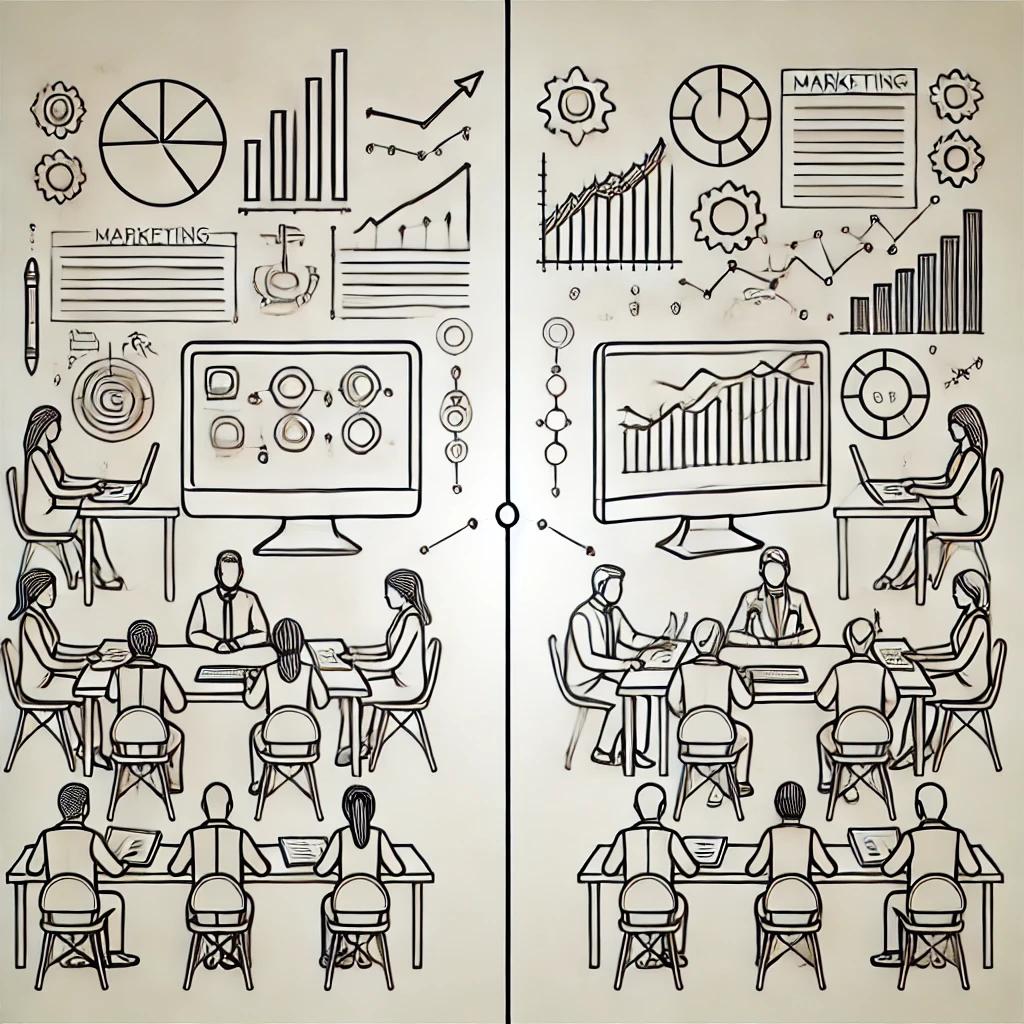 Measuring the Impact of Generative AI in CRM, Loyalty, and Personalisation: A Data-Driven Approach
Measuring the Impact of Generative AI in CRM, Loyalty, and Personalisation: A Data-Driven Approach
The promise of Generative AI (GenAI) in marketing is immense, particularly in CRM, loyalty, and personalisation. Yet, as highlighted in recent insights, the economic value of GenAI remains difficult to quantify, and confidence in its impact often rests more on optimism than rigorous measurement. To bridge this gap, controlled experiments and careful metrics are critical to understanding the true impact of GenAI. Below are five key ways to measure GenAI’s impact in CRM, loyalty, and personalisation, rooted in a framework of experimentation and evidence:
As noted, the best way to demonstrate the value of GenAI is through controlled experiments. Establishing A/B testing frameworks where one team uses GenAI while another does not—or varying levels of GenAI involvement—can provide actionable insights. For instance:
The challenges of quantifying GenAI’s impact highlight the need for companies to move from optimistic assumptions to rigorous measurement. In CRM, loyalty, and personalisation, the potential is there—but only by carefully measuring both the benefits and unintended consequences can organisations realise its promise. If companies fail to measure, they risk missing the opportunity to make informed decisions about where GenAI truly adds value.
Tags: Agile, CRM, Customer Loyalty
 Bravery in CRM: Why Bold Choices Make All the Difference
Bravery in CRM: Why Bold Choices Make All the Difference
CRM practitioners, aka brand builders have an incredible opportunity to be brave—to make bold choices, take risks, and focus on the things that truly matter. This isn’t just about stepping out of comfort zones for the sake of it; it’s about committing to initiatives and objectives that can transform not just businesses, but also the lives of customers.
Over the years, I've learned the importance of putting the customer first and focusing on creating sustainable, tangible value for them. While business metrics and KPIs are important, they are outcomes—not the goal itself. The true focus should always be on the people we serve. This perspective has taught me that if we do the right thing for our customers and create genuine value, the business results will follow. It’s not about being driven by shareholders or external pressures, but about staying true to the needs of the customers who engage with us. By prioritizing their experience and well-being, we can build stronger, more resilient businesses.
One of the key lessons I've learned is the importance of speaking up when things aren’t right. In business, people are often rewarded for launching initiatives and completing projects—for doing more, not less. But sometimes the brave choice is to stop something that isn’t working, to call out a campaign or initiative that seems destined to fail. Too often, people in leadership positions focus on being right rather than doing what’s right. Sometimes this means changing course.
The conversation about bravery in marketing isn’t just about individual actions—it’s about creating an environment where different perspectives are valued. If everyone in marketing brought their own unique point of view to the table, our industry would be stronger for it. We all have our own journeys, our own paths, and our own perceptions. Bringing those things to the work makes it richer and more authentic. It doesn’t mean every idea will be the one we move forward with, but collectively, we end up in a better place. And that’s what brave marketing is really about—the willingness to bring your perspective, take risks, and do what’s right, even if it isn’t always the easy path.
So, the next time you're faced with a marketing challenge, be brave. Share your point of view, even if it feels risky. Because where we end up together will always be better when we’ve all had a voice in getting there.
Tags: CRM, Customer Experience, Customer Loyalty
 The Power of Personalisation
The Power of Personalisation
''The power of personalisation lies in its ability to create a deeper connection between the customer and the brand.''
Pull the other one
The power of personalisation lies in its ability to make a customer's experience smoother, faster, and more relevant. Not every customer is looking for a deep emotional connection with every brand they interact with – often, they just want the best price or the easiest way to complete their purchase. When businesses understand and respect these practical needs, personalisation becomes a way to offer value without overstepping boundaries.
By making things easier – whether it’s showing relevant products, offering timely discounts, or remembering preferences – brands can build loyalty based not on sentimentality but on convenience and efficiency. This kind of personalisation drives retention and repeat purchases because it respects the customer’s time and wallet, leading to improved sales and a competitive edge that’s built on understanding real customer priorities.
Tags: CRM, Customer Experience, Customer Loyalty
 The Emperor's New Clothes - A modern re-telling
The Emperor's New Clothes - A modern re-telling
"In the fabled kingdom of advertising, there ruled an Emperor, 'Marketing Strategy', who was known to have a penchant for the grand and novel. At his court gathered an array of tailors and designers, the 'Marketing Platforms', each vying for his attention with a new piece of garb.
These platform tailors were captivated by the allure of 'the next big thing'. With looms that were filled with digital threads and viral needles, they crafted the Emperor's garments, all the while lost in the glamour of emerging technology. They prattled on about the beauty and spectacle of these new technologies but often forgot to ask if these robes were really suitable for their sovereign.
In walked two shrewd weavers, representing the wisdom of aligning strategies with the clients' needs. 'Your Highness,' they declared, 'what if we told you that all these technological fabrics you've been donning are invisible to the common folk?'
The room fell into a hush.
'These new-age cloaks are dazzling,' the wise weavers continued, 'but are they right for your kingdom? Are they fit for your subjects, the audiences you aim to reach?'
The Emperor was intrigued. He understood that it wasn't about being swayed by the latest thing but about digging deep to see what was truly appropriate for his people. Technology was not to overshadow strategy but to serve it. He had become a victim of Cruel Optimism where something you desire is actually an obstacle to your flourishing. The Emperor had realised that he was now serving the technology and not his people.
He soon saw that all these new-fangled garments, attractive as they were, could become mere illusions if not worn with due consideration. It was not about using his kingdom as a test bed for something new; it was about meaningful improvements rather than fleeting excitement.
The Emperor declared, 'From this day on, we shall never lose sight of our true purpose. We shall be guided by what's best for our subjects, not what momentarily dazzles our eyes.'
And so, the Emperor's New Clothes became a tale not just of vanity but of vision. It's a story that speaks to our age, an age where the chase for the novel can blind us to the essence of what we do. It reminds marketers not to become addicted to the channel but to focus, hand on heart, on adding true value.
In our own empires of enterprise and strategy, may we don the robes that truly suit us and those we serve.
Tags: Customer Experience, Customer Loyalty
 The Instant Gratification Paradox
The Instant Gratification Paradox
A Revolutionized Shopping Experience:
Next-day and same-day grocery delivery services epitomize instant gratification. Customers can now receive their ordered goods, including fresh produce, at their doorsteps within hours. This unprecedented convenience caters to the lifestyle of the modern, busy consumer, enhancing satisfaction and brand loyalty.
The Allure of Discounts and Returns:
Heavy discounts and free return policies have become integral in attracting price-sensitive customers. These strategies foster a risk-free and economical shopping environment, driving impulsive purchases and repeated patronage.
Spurring Economic Activity:
The immediate gratification trend, characterized by speed and convenience, propels sales volume and economic activity. Consumers, incentivized by instant delivery and attractive pricing, are likely to increase their spending, boosting business revenues and market dynamics.
Skyrocketing Consumer Expectations:
These service enhancements, though beneficial, contribute to escalating consumer expectations. Customers are becoming accustomed to instantaneous services, leading to increased pressure on brands to continuously innovate and exceed these expectations, which can be unsustainable.
Environmental and Economic Strains:
The boom in same-day deliveries, particularly in the grocery sector, often requires increased transportation, leading to environmental concerns such as pollution and traffic congestion. Moreover, constant discounts can sometimes undermine the financial health of businesses and affect the perceived value of products and services.
A Culture of Impulsivity:
Instant gratification trends, including instant deliveries and easy return policies, may inadvertently foster a culture of impulsive and unsustainable consumption. Customers, emboldened by these conveniences, might prioritize instant gratification over thoughtful purchasing decisions.
Consumer Education and Awareness:
It becomes imperative for brands to assess if they have inadvertently cultivated overly demanding consumer behaviours. Balancing act lies in educating customers on the impacts of instant gratification, including environmental and economic repercussions.
Sustainable Innovations:
Brands can explore grouping deliveries, offering scheduled delivery options, and incentivizing eco-friendly choices to mitigate environmental impacts. Personalised engagement, aided by data analytics, can enhance the customer experience without necessitating constant discounts.
1. Ultra-Fast Deliveries:
Companies might offer deliveries in under an hour, leveraging advanced logistics, AI, and possibly drones to ensure that customers receive their orders almost immediately after placing them. For instance, Amazon could further refine and expand its Prime Now service.
2. AI-Powered Personal Assistants:
Imagine more advanced AI personal assistants that can predict your needs and execute tasks like shopping or scheduling without your initiation. They would analyse your behaviour and preferences to provide instant responses and actions.
3. Virtual Shopping Experiences:
Enhanced virtual reality (VR) shopping experiences where customers can "walk" through stores virtually and purchase items in real-time, getting a near-instant, in-store shopping experience from the comfort of their homes.
4. Instant Customization:
Brands could offer real-time product customizations. For example, you could visualize and order custom-designed apparel or gadgets instantly, and they’d be manufactured and shipped on the same day.
5. Automated Grocery Shopping:
Stores like Amazon Go could become more widespread, where customers just walk in, pick up what they need, and leave - with billing done automatically. In 2023, we could see a rise in the number of these stores globally and enhanced technology ensuring instant checkout and payment processes.
6. Real-Time Health Insights:
With the advancement in wearable technology, individuals could receive real-time health data and insights, and instant virtual consultations with healthcare professionals could become commonplace.
7. Instant Digital Content:
The growth of platforms offering instant access to digital content, such as e-books, online courses, or streaming services, could reach new heights, with more personalized and instant content recommendations based on AI algorithms.
In an era where same-day grocery deliveries, next-day shipments, and on-the-spot services are becoming the norm, brands are tasked with the challenge of balancing instant gratification and sustainable practices. The onus is not just on meeting the ever-increasing consumer demands but educating and steering customer behaviours towards responsibility and sustainability.
This delicate balance will not only define the future of customer service excellence but also shape the trajectory of consumer behaviour, transforming an era of impulsivity to one of informed, conscious consumption. The quest for instant gratification, while beneficial, prompts a need for introspection and innovation to harmonize immediate consumer needs with long-term sustainability and responsibility.
Tags: Customer Experience, CRM, Customer Loyalty
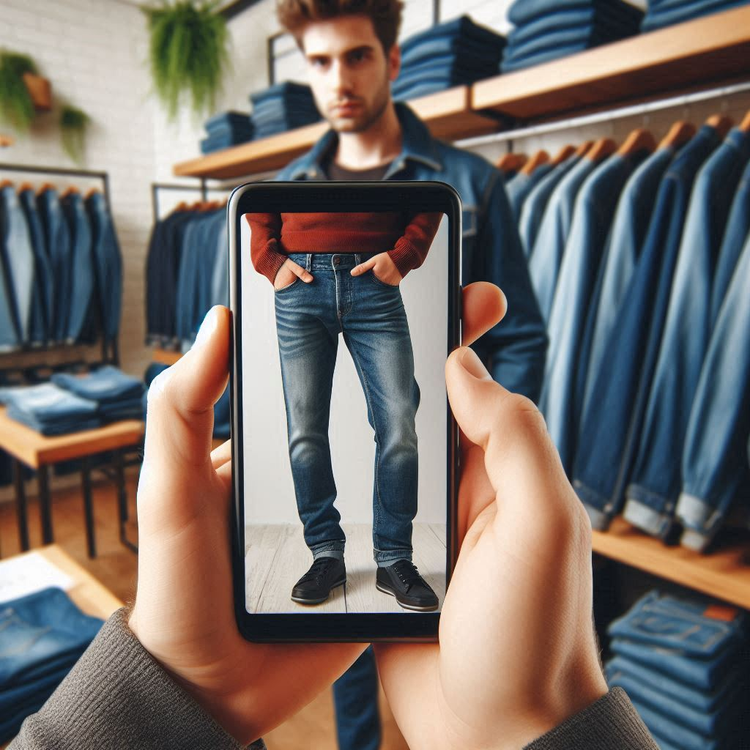 The True Purpose of Omnichannel
The True Purpose of Omnichannel
Imagine walking into a store where the sales associate remembers not just your name, but the exact items you’ve been eyeing online. This seamless, frictionless experience is what omnichannel marketing promises. But behind the sleek tech and data-driven personalisation, are companies truly solving for the customer’s needs, or simply keeping up with a trend?
But asking the question ‘what is the point?"—challenges us to think beyond the mechanics of omnichannel marketing. It’s not enough to simply be on every channel because “everyone is doing it.” The heart of omnichannel success lies in understanding what customers really want: continuity and personalisation that transcends individual touchpoints.
Customer loyalty in an omnichannel environment isn’t just about rewards points. It’s about building relationships that are personalised, engaging, and, most importantly, consistent. In fact, 75% of customers expect consistent interactions across all channels, and when businesses can deliver, they stand to gain significantly. Research by McKinsey has shown that customers who have a seamless omnichannel experience with a brand tend to spend 15-30% more over time.
But it’s not just about spending more. Omnichannel customers are more likely to become brand advocates. The loyalty that stems from a well-executed omnichannel strategy translates into higher retention rates, which can boost profitability by 25-95%, according to studies from Bain & Company. This means that the business not only wins in the short term but builds long-term resilience in a competitive market.
What do customers actually want? It’s simple: they don’t want to repeat themselves. Imagine calling customer service after browsing online, only to have to recount your entire shopping history. Frustrating, right? 73% of consumers feel that a company's experience is the most important factor in their purchasing decisions. They expect brands to understand them, anticipate their needs, and solve problems with minimal friction.
For marketers, the real challenge isn’t always about adopting omnichannel capabilities—it’s using them wisely. Being omnipresent is not the goal. Rather, it’s about creating an ecosystem where each touchpoint enhances the customer journey. Whether that’s a personalised recommendation via email, a smooth checkout process online, or remembering a customer’s preferences in-store—every interaction should build on the last.
The future of omnichannel marketing lies in merging data with empathy. We have the tools, from sophisticated CRM systems to advanced AI algorithms, but the real magic happens when brands use these tools to genuinely serve the customer. When a brand can anticipate, remember, and reward its customers across every channel, loyalty becomes the natural by product.
So, what is the point? The point is loyalty. Not the transactional kind that comes from a discount code or a free coffee, but the deep, lasting loyalty that’s born out of trust, consistency, and genuine value creation.
Tags: CRM, Customer Experience, Customer Loyalty
 Tailoring loyalty programmes to changing consumer expectations
Tailoring loyalty programmes to changing consumer expectations
The Role of Customer Feedback and Data Analytics in Loyalty Programs
Customer feedback and data analytics are crucial in refining loyalty programs, serving as the "senses" that gather and interpret information. Customer feedback provides direct insights into customer sentiments, preferences, and experiences, helping identify issues and areas for improvement. By actively listening to customers, businesses can tailor their loyalty programs to meet specific needs, such as offering personalized rewards over generic ones. This customization increases customer satisfaction and retention.
Data analytics offers a quantitative view of consumer behaviour, allowing businesses to segment their customer base, track spending patterns, and measure engagement levels. This data helps identify high-value customers and create targeted campaigns that maximize the impact of loyalty programs. Predictive analytics can forecast future behaviours, enabling proactive strategy adjustments to stay ahead of customer expectations.
Combining customer feedback with data analytics provides a comprehensive understanding of customer motivations and actions. Feedback reveals why customers behave a certain way, while analytics shows what they are doing and how. This holistic approach helps design loyalty programs that are both data-driven and empathetic, ensuring they remain relevant and valuable to both customers and the business.
Enhancing Loyalty Programs through Omnichannel Strategies
Omnichannel strategies significantly enhance the effectiveness of loyalty programs by creating a seamless, integrated customer experience across various touchpoints. Consistency across online, in-store, and mobile interactions strengthens brand loyalty, as customers expect the same level of service and rewards regardless of how they engage.
Omnichannel approaches also enable personalized interactions by collecting data from multiple channels, allowing businesses to tailor rewards and communications to individual customer preferences. Real-time engagement is another benefit, where customers can instantly redeem offers received via email through an app or at a physical store, enhancing the overall customer experience.
Furthermore, omnichannel strategies increase convenience by offering multiple engagement options, making it easier for customers to participate in loyalty programs and earn rewards. They also help businesses track and measure program success more accurately, allowing continuous refinement and improvement.
Adapting Loyalty Programs for Millennials and Gen Z
Loyalty programs are evolving to meet the expectations of millennials and Gen Z, who value tech-savviness, personalized experiences, and brands that align with their values. Digital integration is key, with many programs now accessible through mobile apps, providing seamless, user-friendly experiences. Personalization is another focus, leveraging data analytics to offer tailored rewards and recommendations based on individual preferences.
Social and environmental responsibility is crucial for these generations, leading loyalty programs to include options for donating points to charitable causes or offering eco-friendly rewards. Gamification, through elements like challenges and leaderboards, adds an interactive and fun dimension to loyalty programs, increasing engagement.
Instant gratification is important for millennials and Gen Z, prompting loyalty programs to offer immediate rewards and benefits, such as instant discounts or exclusive event access, keeping members continuously engaged and motivated.
Maintaining Consumer Loyalty in a Competitive Market
In a market characterized by changing fashion trends and consumer preferences, brands must be agile and innovative to maintain consumer loyalty. Staying ahead of trends through market research, social media monitoring, and influencer collaborations is essential. Personalization, achieved through data analytics, helps brands offer tailored recommendations and customized shopping experiences.
Quality and consistency in products build trust and reliability, encouraging customer loyalty. Engaging with customers through social media, events, and loyalty programs fosters a sense of community and belonging. Exclusive benefits, such as access to new collections or special discounts, make customers feel valued and incentivize repeat purchases.
Sustainability and ethical practices are increasingly important, with many consumers preferring brands that commit to environmental and social responsibility. Aligning with these values helps build stronger customer loyalty.
Tags: Business Strategy, CRM, Customer Loyalty
 Data Privacy from a Filmmaker's Perspective
Data Privacy from a Filmmaker's Perspective
As a film buff, I enjoy movies through various lenses—be it storytelling, cinematography, or even marketing strategies behind film releases. This can be particularly useful when thinking about how to craft narratives for brands or engage audiences emotionally, much like filmmakers do.
One film I re-watched after first coming across it a few years ago was "The Cabin" (original title: La Cabina), a 1972 Spanish short film directed by Antonio Mercero. The story revolves around a man who becomes trapped inside a telephone booth in a busy public square. At first, passers-by attempt to help him, but their efforts are in vain, and soon the situation becomes a spectacle, attracting a crowd.
As the day progresses, the atmosphere shifts from humour to horror. The trapped man is eventually taken away, still enclosed in the booth, by a group of workers. The film concludes in a mysterious and unsettling manner, revealing a warehouse filled with other phone booths containing dead or missing individuals, amplifying the sense of dread and helplessness.
La Cabina is known for its surreal, Kafkaesque tone and exploration of themes like isolation, societal indifference, and existential anxiety.
In the context of customer data, La Cabina can serve as a metaphor for the modern relationship between consumers and platforms like Google, Facebook etc, which offer functionality in exchange for personal data.
The man trapped inside the cabin could be seen as a representation of consumer data—initially, the individual enters willingly, much like users who freely share their information to access services. However, as time passes, the person finds himself stuck, unable to escape or control his situation. Similarly, consumers often find their data locked into systems and platforms, losing agency over how it’s used or where it goes.
The initial attempts of passers-by to help can be seen as the public’s growing awareness of data privacy issues. However, just as in the film, these efforts often fall short due to the complexity of the system. Indeed, some of the spectators profit from the event - checkout the tall man behind the pastry boy. Eventually, the man is taken away in the booth, much like consumer data being transferred, sold, or processed beyond the individual's control or awareness. The eerie ending, with the warehouse full of other trapped booths, reflects the vast repositories of data collected by corporations, showing how widespread and inescapable the issue is.
This metaphor highlights the dangers of unchecked data collection and the feeling of helplessness consumers might experience when they realize the extent to which their personal information is used, often without clear consent or understanding. It underscores the importance of transparency, control, and protection when dealing with consumer data in today's digital age.
The film can be seen on my YouTube channel
This post was inspired by the Ethical Commerce Alliance
Tags: CRM, Privacy, Customer Loyalty
 IQPC Personalisation Summit Advisory Board
IQPC Personalisation Summit Advisory Board Depth in CRM
Depth in CRM Seamless by Design (Not by Accident): Unified Commerce Lessons from Signet & Currys
Seamless by Design (Not by Accident): Unified Commerce Lessons from Signet & Currys The (Digital) CMO Barometer
The (Digital) CMO Barometer CRM Isn’t Just the Postman. It’s the Telescope.
CRM Isn’t Just the Postman. It’s the Telescope. Luxury’s Digital Pivot: What LVMH’s AI Strategy Reveals About the Future of High-End CRM
Luxury’s Digital Pivot: What LVMH’s AI Strategy Reveals About the Future of High-End CRM